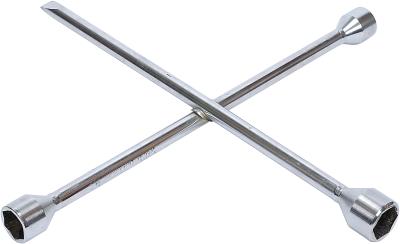
The lower control arm on your PT Cruiser helps to hold the steering knuckle in position as you move down the road. Even though the control arm itself is held in place only by two bolts, a ball joint, and retaining nuts, replacing it may become an involved process. You will need special tools and must reassemble components to torque specifications, which vary depending on your particular model and year. Still, with enough preparation, the right tools and the aid of a helper, you can replace one or both suspension arms on your PT Cruiser.
Park your PT Cruiser on a level surface and shift the transmission to Neutral (N).
Loosen the wheel lug nuts with a lug wrench on the wheel assembly side you will be working on.
Raise the wheel/tire assembly using a floor jack. Support it on a jack stand.
Chock the rear wheels.
Finish removing the wheel/tire assembly.
Remove the pinch bolt holding the ball joint on the lower control arm to the steering knuckle using a wrench and a ratchet and socket.
Unfasten the links at each end of the stabilizer bar, using a ratchet and socket. Then swing the stabilizer bar downward. This will provide enough clearance for you to remove the control arm, according to the Chrysler PT Cruiser Haynes Repair Manual.
Separate the ball joint from the steering knuckle with a ball joint separator. Do not push out on the steering knuckle; that may cause it to separate from the CV-joint and damage components. If you are replacing the left (driver-side) control arm, go to step 12 now.
Unscrew the bolt holding the inner fender splash shield to the drive-belt splash shield. Then remove the drive-belt splash shield. Use a ratchet and socket. Removing the shield will give you access to the torque strut.
Remove the pencil strut (tubular bar) attached to the engine and right, front end of the crossmember body mount using a breaker bar and a socket.
Remove the torque strut from the engine and crossmember using a breaker bar and socket.
Unscrew the front bolt holding the control arm to the crossmember using a ratchet, ratchet extension and socket.
Unscrew the rear bolt holding the control arm to the crossmember using a breaker bar and socket.
Remove the lower control arm from the vehicle. Use a suitable pry bar to dislodge the arm bushings from their mounting positions.
Set the lower control arm in position. With the aid of a helper, carefully work the control-arm bushings in place using all-purpose automotive grease, if necessary, and the pry bar.
Make sure there is no weight stressing the control arm as you get ready to install and tighten the mounting bolts. If necessary, raise the steering knuckle and engine a few inches using two floor jacks to align it to the control-arm joint ball position.
Install the front and rear arm mounting bolts.
Tighten the rear bolt to the torque recommended by your vehicle manufacturer using a torque wrench and socket (see Tips for more information).
Tighten the front bolt to the torque recommended by your vehicle manufacturer using a torque wrench and socket.
Insert the ball-joint stud bolt into the steering knuckle. Align the notch in the stud bolt to install the pinch bolt.
Insert and tighten the ball joint-to-steering knuckle pinch bolt to the torque specification listed in your vehicle service manual. Use a wrench, torque wrench and socket. If you are installing the left (driver-side) control arm, go to step 12.
Install and tighten the torque strut to the torque specification listed in your vehicle service manual. Use a torque wrench and socket.
Install the pencil strut (tubular bar) to the torque specification listed in your vehicle service manual. Use a torque wrench and socket.
Install the drive-belt splash shield using the ratchet and socket.
Install and tighten the bolt that holds the inner fender splash shield to the drive-belt splash shield using the ratchet and socket.
Swing the stabilizer bar back into position and fasten the links at each end of the stabilizer bar using the ratchet and socket but do not tighten the links yet.
Install the wheel/tire assembly and lug nuts.
Lower the car and tighten the lug nuts using the lug wrench.
Raise the front side of your PT Cruiser using a pair of ramps.
Torque the stabilizer-bar links to the torque specification listed in your vehicle service manual. Use a torque wrench and socket.
Grease the ball joints, if necessary, using ball-joint grease and a grease gun.
Drive your PT Cruiser to the shop and have them align the front wheels.